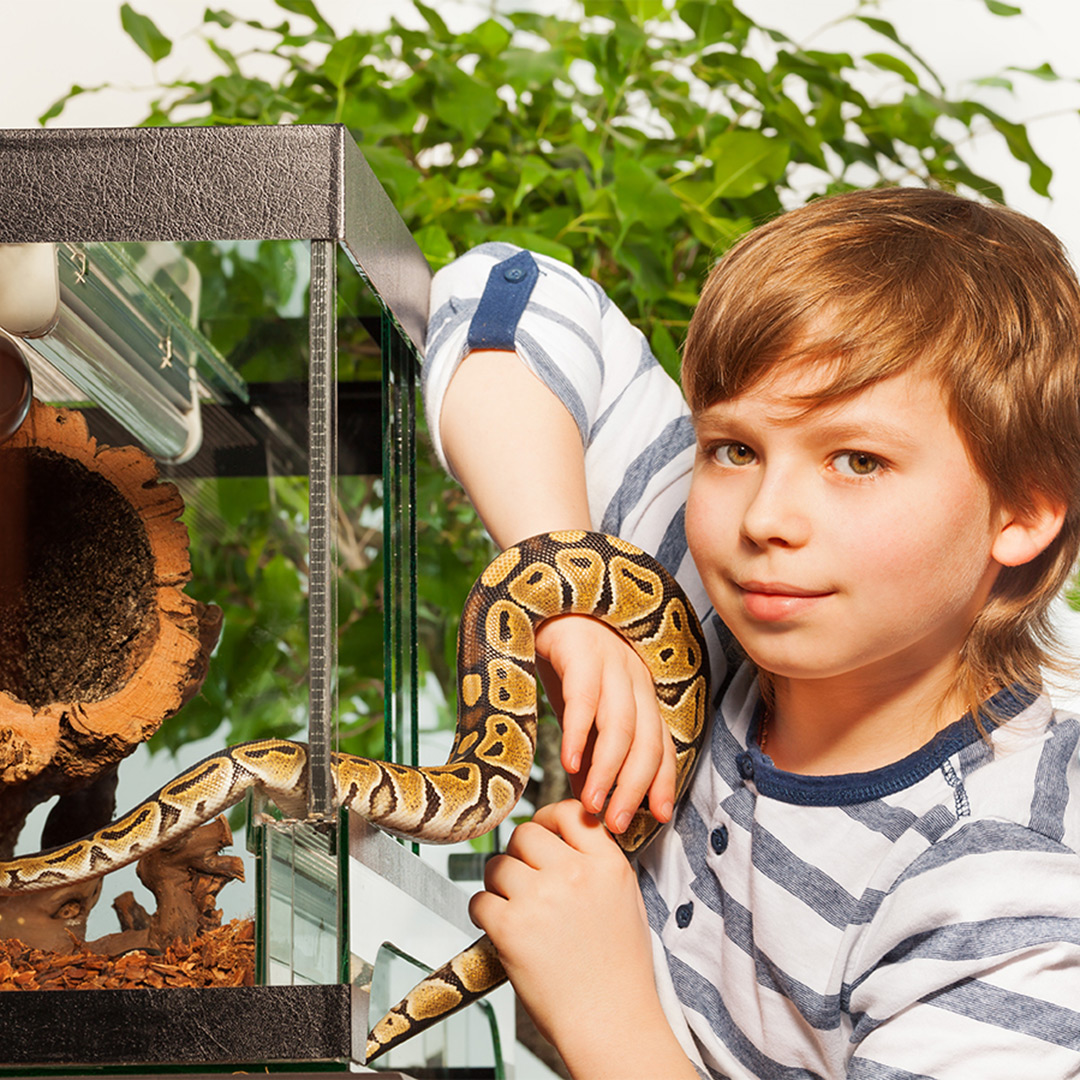Essential Treatment Tips for Family Pet Snakes: A Beginner's Overview
As beginner reptile lovers get started on the journey of caring for family pet serpents, understanding the fundamental principles of correct husbandry is paramount. From selecting the ideal serpent varieties to creating an appropriate environment and keeping optimum environmental conditions, each step plays a vital duty in cultivating a thriving connection between proprietor and snake.
Picking the Right Serpent Variety
When selecting a snake species as an animal, it is important to think about aspects such as dimension, personality, and treatment requirements. These elements play a significant role in guaranteeing that the snake and the owner have an unified and meeting partnership. Dimension is a necessary factor to consider as it directly impacts the space required for the serpent to prosper easily. Some types, like the Sphere Python, stay reasonably tiny, making them appropriate for beginners or individuals with minimal area. On the other hand, species such as the Burmese Python can expand fairly big, requiring a more significant room and specialized care.

Setting Up the Suitable Room
To create an optimum living environment for your pet dog snake, precise focus to information is called for when establishing the enclosure. The initial consideration is the size of the room, guaranteeing it gives enough area for your serpent to walk around and extend easily. A basic guideline is to have a container that goes to the very least as long as the serpent's size and large sufficient to enable different hiding areas and a water dish.
Substratum selection is important, as it not just affects the aesthetics of the room yet also plays a function in maintaining proper humidity degrees. Popular substratums consist of aspen shavings, cypress compost, and paper towels, each using different benefits depending upon the snake varieties and wanted moisture degrees.
Incorporating a temperature gradient is essential for your serpent's total health. Utilize heat lamps, heat pads, or ceramic heaters to develop a cozy side and a cooler side within the unit, enabling your snake to manage its body temperature as needed. Furthermore, offering appropriate lights, concealing areas, and climbing up branches will supply enrichment and stimulation for your pet snake.
Providing Proper Home Heating and Lights
Proper heating and lighting are necessary parts in developing an appropriate environment for your family pet snake. Serpents are ectothermic, meaning they rely on external resources of warm to regulate their body temperature level. To mimic their all-natural environment and guarantee your serpent's well-being, it is essential to supply an appropriate warmth gradient click here for more within the enclosure. This slope includes a warm basking area at one end, maintained at around 85-90 ° F for many serpent species, and a cooler location around 75-80 ° F at the other end to permit thermoregulation.
For heating, under-tank heating pads or warm tape are frequently used to create a cozy area for your serpent to bask. In addition, serpents require straight from the source a regular light-dark cycle to keep their circadian rhythm.
Keep in mind to investigate the specific home heating and illumination demands for your snake species to offer a healthy and balanced and comfy atmosphere for your pet dog. snake for sale.
Developing a Feeding Regimen
Snakes have differing feeding regularities based on their varieties, age, and dimension. Typically, grown-up serpents are fed when every 1-2 weeks, while more youthful snakes might require even more frequent meals.
When feeding your serpent, choose appropriately sized victim products. The size of the victim should match the snake's girth for proper food digestion and to prevent regurgitation. Icy target things are recommended as they present less threat to your snake contrasted to live target, which can hurt the snake during feeding.

Handling and Mingling Your Serpent
When managing and socializing your family pet serpent, it is very important to approach with care and regard for their natural habits and limits. Snakes are solitary pets by nature and may not look for out social interaction like various other animals. With gentle and constant handling, numerous snakes can come to be accustomed to human call.
Before trying to manage your serpent, guarantee that they fit and not in shed or digestion setting, as this can make them extra short-tempered. Approach your snake smoothly and confidently, supporting their body properly to make them feel secure. Prevent abrupt activities or loud noises that can shock them.
Beginning with short handling sessions and gradually raise the time as your snake ends up being a lot more accustomed to being held. Be observant of their body movement - if they show indicators of stress and anxiety like hissing, quick tongue flicking, or curling firmly, it's ideal to put them back in their room.
Remember that not all snakes enjoy handling, and it's important to appreciate your pet dog's preferences. Regular, gentle interactions can help build trust and minimize anxiety for your snake, resulting in an extra positive relationship between you both.
Verdict
Finally, it is important for newbie serpent owners to carefully pick the right snake varieties, set up a suitable enclosure, offer ample heating and lighting, develop a feeding regimen, and manage their snake correctly. Complying with these treatment ideas will make certain the wellness and joy of the pet serpent, creating a harmonious connection in between owner and reptile.
When picking a serpent varieties as a other pet, it is important to think about factors such as size, character, and treatment demands. Some serpents, like the Corn Serpent, have a tendency to be docile and tolerant of dealing with, making them perfect for those brand-new to serpent possession. Investigating and recognizing these requirements details to the varieties you are taking into consideration is critical to give proper care and guarantee the serpent's health. Generally, grown-up serpents are fed as soon as every 1-2 weeks, while more youthful snakes may require even more regular dishes.
:strip_icc()/royal-python--ball-python--python-regius---studio-shot-460703803-5c43673e46e0fb0001dcf2b7.jpg)